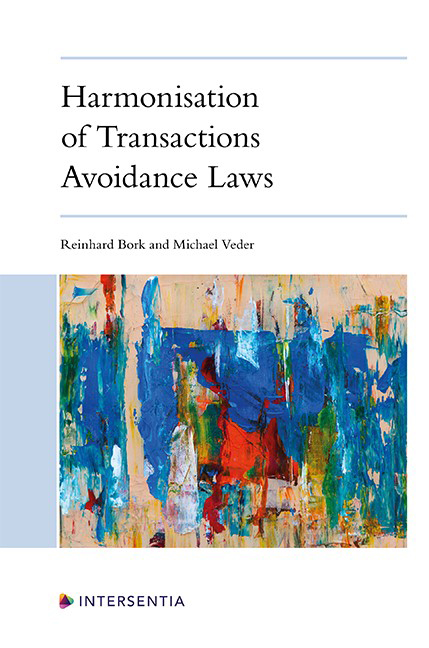Finland
Published online by Cambridge University Press: 26 May 2022
Summary
PART 1. DETAILS OF YOUR NATIONAL TRANSACTIONS AVOIDANCE LAW
I. SYSTEM
Question 1. Is your transactions avoidance law (for terminology cf. Introduction at C.) part of insolvency law or is it in parts or as a whole incorporated in other fields of law (e.g. general civil law, commercial law, company law)?
Finnish transactions avoidance law is incorporated in the Act on the Recovery of Assets to the Bankruptcy Estates (758/1991, hereinafter ReAct), which is also applicable in business restructuring, enforcement of individual claims and in the debt adjustment of private persons. The basic principles as well as the substantive preconditions for avoidance in Finland are, subject to some exceptions, similar to the Swedish Bankruptcy Act (1987:672), chapter 4. There are special provisions in Finnish legislation regarding the procedure and litigation over avoidance disputes, see Restructuring of Enterprises Act (47/1993, hereinafter ResEntAct), Enforcement Code (705/2007) and Act on the Adjustment of the Debts of a Private Individual (57/1993, hereinafter DAA). Naturally, the Bankruptcy Act of Finland (120/2004, hereinafter BAF) is of great importance for transactions avoidance law.
Question 2. Are the rules on transactions avoidance law in your jurisdiction the same for entrepreneurs/legal entities and consumers/natural persons? If not, please explain the differences and take it into account when completing this questionnaire.
Yes, transactions avoidance law applies to all debtors, no matter whether a natural or a legal person or whether a consumer or an entrepreneur.
Question 3. Are the rules on transactions avoidance law in your jurisdiction the same for liquidation and restructuring proceedings (if any)? If not, please explain the differences and take it into account when completing this questionnaire.
Transactions avoidance law covers liquidation as well as restructuring proceedings. However, some divergences in interpretation might be discussed, for example, whether or not a payment of debt is “considerable”in amount/ “ordinary” (in the latest translation: “normal”) in view of the circumstances; this has been discussed in Finnish legal literature, but not tested in the Supreme Court, although its reasoning in precedent KKO 1999:57 leaves some space for this kind of interpretation.
- Type
- Chapter
- Information
- Harmonisation of Transactions Avoidance Laws , pp. 777 - 808Publisher: IntersentiaPrint publication year: 2022



